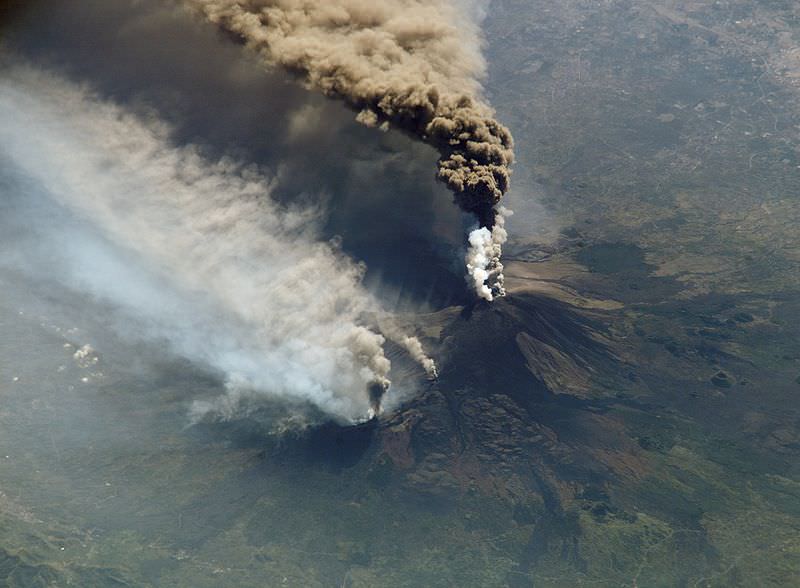[/caption]
Mount Etna is a stratovolcano on the east side of the Island of Sicily. Standing 3,329 meters tall, Etna is the second largest volcano in Europe, and the highest mountain in Italy south of the Alps. But more importantly, Mount Etna is one of the most active volcanoes in the world, in an almost constant state of eruption.
Etna is classified as a stratovolcano (also known as a composite volcano). This is where many different kinds of eruptions over time have built up the huge mountain. You can have layers of lava, rock and ash, and many volcanic vents reaching the surface and capable of erupting. Many of the largest, most dangerous volcanoes in the world are stratovolcanoes (Mount St. Helens, for example).
Geologists believe the Etna started erupting about 300,000 years ago. In the last 35,000 years or so the mountain has had many explosive eruptions with pyroclastic flows cascading down its banks. Ash from Mount Etna eruptions has been found in Rome, located 800 km away. The successive eruptions have also caused calderas on the mountain to collapse creating depressions. There are now almost constant eruptions on Etna, with severe eruptions happening every 20 years or so.
You would think that the Italians would be nervous about having an active volcano in their back yard, but people actually live on the slopes of Etna. There are vineyards and orchards spread across its flanks; that’s because the rich volcanic soil is so good for planting. For example, in 2007 an eruption brought rivers of lava flowing down the slopes of Etna into an uninhabited valley. Villagers in the city of Catania on the island of Sicily could watch the eruption. Only an airport was closed during the eruption.
We have written many articles about Mount Etna for Universe Today. Here’s an article about images of Etna captured by 4 different satellites. And here’s an article about Mount Saint Helens.
Want more resources on the Earth? Here’s a link to NASA’s Human Spaceflight page, and here’s NASA’s Visible Earth.
We have also recorded an episode of Astronomy Cast about Earth, as part of our tour through the Solar System – Episode 51: Earth.

